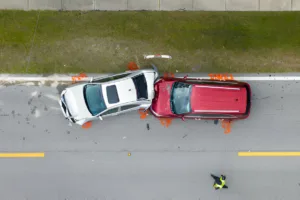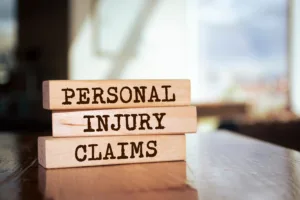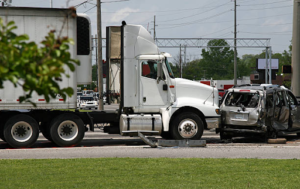Uncovering Hidden Dangers: The Importance of Awareness
Accidents often come as a shock, yet when it comes to hidden dangers and lesser-known accidents, their surprise factor increases exponentially. Such incidents take us by surprise because they exist beyond our awareness sphere; thus, in order to effectively address them we must prioritize raising awareness.
At first glance, society recognizes and acknowledges the risks associated with well-known accidents like car crashes or fires; it can be easy to overlook the dangers that lie beneath the surface. By increasing awareness about lesser-known accidents, we can equip individuals with the knowledge and tools to avoid them.
Awareness can have far-reaching benefits beyond accident prevention; it also plays a key role in mitigating medical consequences of incidents that take place. When individuals understand potential risks and consequences of incidents, they can seek medical advice for early intervention and treatment; this awareness may prove particularly valuable when symptoms or effects from lesser-known accidents don’t manifest immediately.
Increased awareness can also help lower the stigma attached to medical consequences of accidents. By raising awareness of physical and mental health effects of accidents, we can foster an environment more empathetic and supportive of individuals who have experienced such incidents – helping promote an inclusive approach to healthcare that provides ample support and resources.
Lesser-Known Accidents: Types and Examples
Road Accidents Beyond Car Crashes
- Cycling accidents: Risks on the road, collisions, and injuries
- Pedestrian incidents: Crosswalk accidents, pedestrian-vehicle collisions, and pedestrian safety measures
Domestic Accidents: Hazards at Home
- Falls: Slippery floors, uneven surfaces, and improper ladder use
- Burns: Scalding from hot liquids, contact with hot surfaces, and electrical burns
- Choking: Food or small objects obstructing the airway
- Poisoning: Ingestion of toxic substances, including household chemicals or medications
Sports and Recreational Accidents
- Concussions: Head injuries resulting from sports activities
- Overexertion: Heatstroke, dehydration, and exhaustion during physical exertion
- Drowning: Water-related accidents in pools, lakes, and oceans
Workplace Accidents
- Repetitive Strain Injuries: Musculoskeletal disorders caused by repetitive movements
- Exposure to Harmful Substances: Chemical exposure, inhalation of toxic fumes, and radiation exposure
Other Hidden Dangers
- Foodborne Illnesses: Contaminated food causing gastrointestinal infections
- Recreational Drug Complications: Adverse reactions, overdoses, and long-term health effects
- Electronic Device Hazards: Electrical shocks, fires, and injuries from faulty devices
Understanding lesser-known accidents allows individuals to better anticipate and mitigate associated risks. Increased awareness allows us to take appropriate precautions that ensure our wellbeing and safety in various environments. In the next section, we explore medical consequences related to these accidents.
Unveiling the Medical Consequences
A. Physical Health Implications of Lesser-Known Accidents
- Traumatic injuries: Fractures, sprains, and dislocations
- Chronic pain and disabilities: Long-term consequences of accidents
- Respiratory issues: Smoke inhalation, chemical exposures, and lung damage
B. Mental Health Impact of Lesser-Known Accidents
- Post-Traumatic Stress Disorder (PTSD): Psychological effects of traumatic incidents
- Anxiety and Depression: Emotional toll and long-term mental health consequences
- Adjustment difficulties: Coping with the aftermath and adapting to life changes
C. Delayed and Hidden Medical Consequences
- Delayed symptoms: Underlying injuries and medical conditions that surface over time
- Internal injuries: Organ damage, internal bleeding, and long-term complications
- Unseen effects: Psychological trauma, emotional distress, and invisible disabilities
Little-known accidents not only pose immediate threats, but can have lasting medical repercussions as well. To understand their physical and mental health ramifications fully it is crucial that we explore them thoroughly.
Physical injuries caused by less-than-expected accidents are a significant threat to physical health. Fractures, sprains, and dislocations may result from falls, sports-related incidents, workplace incidents or accidents at work; additional complications include chronic pain and disabilities that continue long after initial incidents have passed; lung damage may arise as a result of smoke inhalation, chemical exposures or external factors causing injuries that cause respiratory issues.
Mental health should not be ignored as even less-well-known accidents can have lasting psychological repercussions, leading to conditions such as Post-Traumatic Stress Disorder (PTSD). Individuals may experience flashbacks and increased anxiety surrounding an incident. Anxiety and depression often follow after such injuries occur as well as adjustment difficulties due to ongoing physical injuries.
One factor distinguishing lesser-known accidents from well-known ones is their delayed and hidden medical consequences. Some injuries may not immediately manifest symptoms, leading to delayed diagnoses and treatments; internal injuries like organ damage or bleeding might go undetected until complications arise; psychological trauma, emotional distress and invisible disabilities might impact individuals even though physical injuries might not be evident to outside observers.
By highlighting these medical consequences, we aim to emphasize the significance of seeking medical assistance after any type of accident – no matter how seemingly minor. It’s essential to recognize that its effects can extend far beyond immediate aftermath and early intervention and proper care are key for long-term well-being.
In the next section, we will highlight the significance of proactive measures and offer practical steps to decrease risks related to lesser-known accidents with medical consequences.
Mitigating Risks: Taking Proactive Measures
A. Education and Awareness
- Promoting public education on lesser-known accidents and their medical consequences
- Encouraging safety campaigns and initiatives to raise awareness
- Providing resources and information to empower individuals to make informed decisions
B. Implementing Safety Measures
- Creating and enforcing safety regulations in various settings, such as roads, workplaces, and recreational areas
- Encouraging the use of protective gear and equipment
- Conducting regular safety inspections and maintenance checks
C. Personal Responsibility
- Taking personal responsibility for one’s safety and the safety of others
- Practicing caution and mindfulness in daily activities
- Seeking professional guidance and training for high-risk activities
D. Prompt Medical Attention and Support
- Seeking immediate medical attention after an accident, even if no visible injuries are present
- Engaging in rehabilitation and therapy to promote physical and mental healing
- Utilizing support networks and seeking professional help for psychological well-being
Mitigating risks associated with lesser-known accidents requires an active approach from individuals, communities, and institutions alike. Education and awareness campaigns play a crucial role in providing individuals with the tools to identify and understand risks. By creating accessible resources, we can enable individuals to make more informed decisions regarding their safety.
Implementing safety measures is critical in order to minimize accidents and injuries, with authorities and organizations responsible for their enforcement on roads, workplaces and recreational areas – particularly encouraging the use of protective gear such as helmets, harnesses or footwear that can significantly decrease injuries.
Individuals must assume personal responsibility for both their own safety and that of others. Exercising caution and mindfulness during daily activities at home, on the road or participating in recreational activities can help avoid accidents; while seeking professional guidance or training for high-risk activities such as sports or outdoor adventure ensures individuals are adequately equipped and aware of potential risks.
After an accident occurs, seeking immediate medical care is vital, even if no visible injuries appear to exist. Some injuries may have delayed symptoms or internal effects that require professional evaluation; rehabilitation and therapy sessions can aid both physical and mental healing for a more efficient recovery process; supporting networks can be invaluable resources when seeking emotional wellbeing assistance; they should not be underestimated as such incidents should never be underestimated in terms of emotional impact.
Taking proactive measures, promoting a culture of safety, and prioritizing individual and collective responsibility, can help us significantly decrease the incidence of lesser-known accidents while mitigating any possible medical consequences. Prevention and early intervention are keys to our own well-being as well as that of others around us.
By understanding the types and examples of lesser-known accidents, their medical consequences, and taking proactive measures against them, we can collectively create a safer environment. Let us unite in raising awareness, implementing safety measures, promoting personal responsibility and ultimately unveiling any hidden dangers or minimizing risks related to lesser-known accidents – ultimately creating a society which prioritizes safety, well-being and the prevention of lesser-known incidents.
Building a Safer Future: Collaboration and Advocacy
A. Collaboration among Stakeholders
- Engaging policymakers, government agencies, and community leaders to prioritize safety
- Facilitating collaboration between healthcare professionals, researchers, and safety organizations
- Encouraging partnerships between businesses, educational institutions, and community groups to promote safety initiatives
B. Advocacy for Safety Measures
- Raising public awareness through media campaigns, social platforms, and community outreach
- Supporting legislation and regulations that address lesser-known accidents and their consequences
- Participating in advocacy groups and organizations dedicated to promoting safety
C. Research and Innovation
- Investing in research to better understand the causes and impacts of lesser-known accidents
- Promoting innovation in safety technology, equipment, and infrastructure
- Encouraging interdisciplinary collaboration to develop effective prevention strategies and interventions
D. Continuous Evaluation and Improvement
- Conducting regular assessments and audits to identify areas of improvement
- Monitoring and analyzing accident data to identify trends and emerging risks
- Adapting safety measures and strategies based on the evolving landscape of lesser-known accidents
Building a safer future takes collaboration, advocacy, and dedication from all stakeholders. Engaging policymakers, government agencies and community leaders in prioritizing safety measures while encouraging collaboration between healthcare professionals, researchers and safety organizations we can leverage collective expertise to develop comprehensive solutions.
Advocacy plays an integral role in raising awareness and creating lasting change. We can reach our communities through media campaigns, social media posts, community outreach events and grassroots organizing by informing the public of lesser-known accidents with serious medical ramifications, supporting legislation or regulations designed to mitigate those risks, engaging with advocacy groups or organizations dedicated to safety to increase our collective voice, amplifying collective voices and creating impactful changes that matter.
Investment in research is vital to better comprehending lesser-known accidents. By studying their causes and impacts, we can develop evidence-based prevention strategies and interventions. Furthermore, encouraging innovation in safety technology, equipment, and infrastructure allows us to stay ahead of emerging risks while strengthening accident prevention measures.
Continuous evaluation and improvement are vital to upholding and strengthening safety standards. Regular assessments and audits help identify areas requiring improvements, while monitoring accident data helps us identify trends and emerging risks. Adjusting preventive strategies based on lesser-known accidents ensures we’re constantly optimizing preventive efforts.
As we work together, advocate, conduct research, evaluate and enhance safety measures, we can create a safer future. Let us be united in our quest to uncover hidden dangers, reduce risks of lesser-known accidents, promote safety awareness and foster a culture of safety – creating a society which prioritizes well-being and protection of its members, guaranteeing generations-to-come a brighter and safer future.
Conclusion
Hidden dangers and lesser-known accidents pose significant threats to our wellbeing in daily life, from car crashes to domestic hazards, sports-related incidents and workplace incidents. By uncovering these hazards and understanding their medical repercussions as well as taking proactive measures we can create a safer environment for ourselves and those around us.
Raising awareness and prioritizing education are two crucial steps in responding to lesser-known accidents. By sharing information and resources, we empower individuals to make more informed decisions and take necessary precautions. Implementation of safety measures at both individual and institutional levels also plays a vital role in preventing accidents from happening; personal responsibility, prompt medical treatment, and accessing support networks all play vital roles in mitigating any medical consequences that might result from these events.
Collaboration and advocacy are at the core of creating a safer future. Engaging stakeholders, advocating for safety measures, investing in research and innovation projects, continuously assessing our safety strategies, and continually reviewing and updating them can all contribute towards mitigating risks from less well-known accidents – leading us toward creating a society which prioritizes safety, well-being, and prevention from these often-unseen threats.
Remember, prevention is always better than cure. By staying informed and vigilant with our daily lives and taking proactive measures, we can protect ourselves and those closest to us from hidden dangers lurking around every corner. Let’s come together in our commitment to uncover these risks, raise awareness, and ensure a healthier and safer future for us all.





